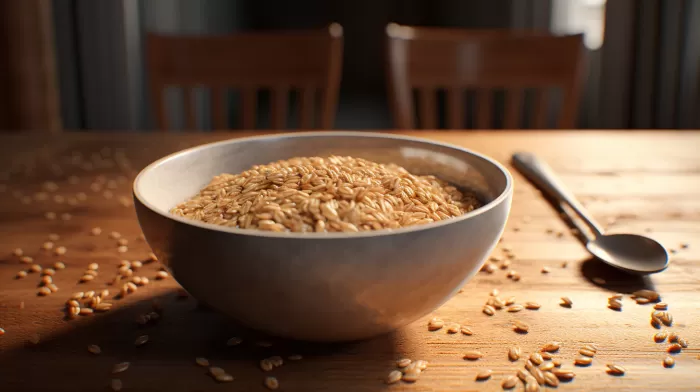Alternative health experts may criticize cereal for being processed and high in glycemic index, but increasing your fiber intake from cereal can actually lower your risk of dying from various diseases, including cancer, heart disease, kidney disease, and stroke. These are some of the leading causes of preventable deaths in the U.S. Strokes, in particular, often go unnoticed even though they rank number four on the list.
In a study involving 367,442 participants from the National Institutes of Health – AARP (NIH-AARP) Diet and Health Study, those who consumed more cereal fiber had a 19 percent lower risk of dying from any cause and a 15 to 34 percent lower risk of dying from any specific disease, including cancer, stroke, and heart disease.
As it turns out, cereal fiber is particularly effective at preventing strokes. A 14-year study of 27,373 women found that those who consumed at least 6 grams of fiber per day, specifically from cereal, had an 11 percent lower risk of any kind of stroke. Another study suggested that consuming at least 7 grams of fiber daily can reduce your risk of experiencing a first-time stroke by 7 percent.
The issue lies in the fact that a mere 5 percent of Americans consume the recommended daily amounts of fiber: 25 grams for women and 38 grams for men. Fortunately, there are numerous cereals on the market containing high amounts of fiber. Post’s Wheat N’ Bran, General Mills’ Fiber One, Kashi’s Go Lean Fiber, and Kellogg’s All Bran Original each consist of 10 or more grams of cereal fiber per serving, while a cup of plain oatmeal boasts 4 grams of fiber.
##Getting to know fiber
Fiber is a type of carbohydrate found in plant-based foods that isn’t easily digested by our bodies. There are two different types: soluble and insoluble. Soluble fiber dissolves in water to become a gel-like substance which can help lower blood cholesterol and glucose levels. Sources include oats, peas, beans, apples, and citrus fruits. Insoluble fiber promotes bowel movement and prevents constipation. Good sources of insoluble fiber include whole-wheat flour, wheat bran, nuts, beans, and vegetables.
##Benefits of consuming fiber
Aside from reducing the risk of strokes and other preventable diseases, fiber offers numerous health benefits:
- Lower cholesterol levels: Consuming soluble fiber can help lower your low-density lipoprotein (LDL) or “bad” cholesterol levels.
-
Control blood sugar: Fiber, particularly soluble fiber, can slow down the absorption of sugar to maintain blood sugar levels. A high-fiber diet also helps reduce the risk of developing type 2 diabetes.
-
Aids in digestion: Consuming a diet rich in fiber can help prevent and relieve constipation.
-
Assists in weight loss: High-fiber foods are usually more filling, so you’re likely to consume less and stay satisfied for longer. Additionally, high-fiber foods tend to have fewer calories.
-
Helps you live longer: Studies have shown that a fiber-rich diet is linked to a longer lifespan, particularly in reducing the risk of cardiovascular, infectious, and respiratory diseases.
To ensure lasting health benefits, maintaining a diet rich in fiber is essential. Start including fiber-rich foods such as fruits, vegetables, whole grains, nuts, and seeds in your daily meals and increase your fiber intake gradually to avoid side effects such as bloating and abdominal cramps. Lastly, hydration is key, so be sure to drink plenty of water to help the fiber smoothly run its course through your digestive system.



